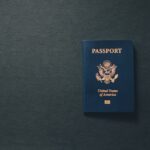Preparing a pet for air travel requires careful planning and consideration. To reduce stress and ensure a comfortable journey, it is essential to familiarize the animal with its travel carrier well before the flight date. This can be achieved by placing the carrier in the home with familiar bedding and toys, encouraging the pet to explore and become accustomed to it.
A crucial step in flight preparation is ensuring the pet’s health. A comprehensive veterinary check-up is recommended to verify that all vaccinations are current and to address any potential health concerns related to air travel. During this visit, pet owners can discuss their animal’s specific needs and inquire about potential anxiety-reducing measures.
Consideration should be given to the pet’s temperament and potential stress levels during the flight. Some animals may benefit from the use of calming aids, such as pheromone sprays or natural remedies, to alleviate anxiety. These options can be discussed with a veterinarian to determine the most appropriate approach for the individual pet.
Key Takeaways
- Start preparing your pet for the flight well in advance to reduce stress and anxiety
- Research and choose the right airline and flight that accommodates your pet’s needs
- Understand and comply with airline regulations and requirements for traveling with pets
- Pack essential items such as food, water, medications, and familiar items for your pet
- Ensure your pet’s comfort and safety during the flight by following airline guidelines and providing necessary comforts
Choosing the Right Airline and Flight
Researching Pet-Friendly Airlines
To begin with, it’s essential to research different airlines’ pet policies and opt for one that is renowned for being pet-friendly. Look for airlines that have a proven track record of safely transporting pets and offer amenities such as climate-controlled cargo areas and attentive staff.
Minimizing Stress for Your Pet
Once you’ve chosen an airline, it’s crucial to select a flight that will minimize stress for your pet. Direct flights are generally the preferred option, as they reduce the time your pet spends in transit and minimize the risk of delays or missed connections. Additionally, consider the time of year and weather conditions at your destination, as extreme temperatures can pose a risk to your pet’s safety during travel.
Booking and Confirming Flight Details
It’s also vital to book your pet’s flight well in advance and confirm all details with the airline to ensure a smooth experience for both you and your furry friend.
Understanding Airline Regulations and Requirements

Before booking your pet’s flight, it’s crucial to familiarize yourself with the specific regulations and requirements of the airline you’ve chosen. Each airline has its own set of rules regarding pet travel, including restrictions on breeds, sizes, and species of animals allowed on board. Some airlines may also have specific requirements for pet carriers, such as size restrictions and ventilation guidelines.
In addition to airline-specific regulations, it’s important to be aware of any international or domestic regulations that may apply to your pet’s travel. This may include obtaining health certificates, vaccinations, or permits depending on your destination. Be sure to research these requirements well in advance of your trip to avoid any last-minute complications or delays.
Packing Essentials for Your Pet
| Item | Quantity |
|---|---|
| Food | Enough for the entire trip |
| Water | 1 gallon per day |
| Leash and collar | 1 set |
| Bed or blanket | 1 |
| Medications | Enough for the entire trip |
| Toys | A few to keep them entertained |
| Identification tags | 1 set with updated information |
Packing essentials for your pet is an important step in ensuring their comfort and safety during the flight. Start by making sure you have a sturdy, airline-approved carrier that is large enough for your pet to stand up, turn around, and lie down comfortably. Line the carrier with absorbent bedding and include familiar items such as toys, blankets, and a piece of clothing with your scent to help soothe your pet during the journey.
It’s also essential to pack enough food and water for your pet’s journey, as well as any necessary medications or supplements. Consider packing a collapsible water bowl and freeze-dried treats to keep your pet hydrated and nourished during the flight. Additionally, bring along a leash and collar or harness for when you arrive at your destination, as well as waste disposal bags for any necessary clean-ups.
Ensuring Your Pet’s Comfort and Safety During the Flight
Ensuring your pet’s comfort and safety during the flight is a top priority for any pet owner. Once you’ve boarded the plane, notify the flight attendants that you have a pet in the cargo hold or under the seat in front of you, so they can be aware of your pet’s presence and provide any necessary assistance. If your pet is traveling in the cargo hold, make sure to inform the ground crew of any special instructions or concerns you may have regarding their care.
During the flight, it’s important to monitor your pet’s behavior and well-being closely. Keep an eye on their comfort level and offer reassurance if they seem anxious or distressed. If your pet is traveling in the cabin with you, try to keep them calm and comfortable by speaking softly to them and offering treats or toys as needed.
If your pet is traveling in the cargo hold, trust that the airline staff are trained to handle pets with care and follow all necessary safety protocols.
Arriving at Your Destination and Settling In

Once you’ve arrived at your destination, it’s important to take some time to help your pet acclimate to their new surroundings. If you’re staying in a hotel or rental property, take some time to familiarize your pet with their new environment and set up a designated area with their bed, food, water, and litter box if applicable. If you’re staying with friends or family, communicate any specific needs or concerns about your pet with your hosts to ensure a smooth transition.
If you’re traveling internationally with your pet, be prepared for any customs or quarantine requirements that may apply upon arrival. Research these regulations well in advance of your trip and make sure you have all necessary documentation and permits on hand to avoid any complications at customs. Finally, take some time to rest and relax with your pet after the journey, offering plenty of love and attention to help them feel safe and secure in their new surroundings.
Tips for International Travel with Pets
Traveling internationally with pets requires careful planning and preparation to ensure a smooth experience for both you and your furry friend. Start by researching the specific requirements and regulations of your destination country well in advance of your trip. This may include obtaining health certificates, vaccinations, or permits depending on the country you’re visiting.
When traveling internationally with pets, it’s also important to consider the potential impact of jet lag on your pet’s well-being. Just like humans, pets can experience jet lag when traveling across multiple time zones, so it’s important to help them adjust gradually to their new schedule. Keep meal times consistent with their home routine and provide plenty of opportunities for exercise and mental stimulation to help them acclimate to their new surroundings.
Additionally, consider the climate and environmental conditions at your destination when traveling internationally with pets. Extreme temperatures or unfamiliar wildlife can pose risks to your pet’s safety, so take precautions such as packing appropriate gear for cold or hot weather and researching any potential hazards in the area. Finally, be patient and understanding with your pet as they adjust to their new surroundings, offering plenty of love and reassurance as they settle into their international adventure.
If you’re planning to travel with your furry friend, you may want to check out this article on tips for flying with dogs. It provides helpful advice on how to make the experience as smooth and stress-free as possible for both you and your pet. From choosing the right airline to preparing your dog for the journey, this article covers everything you need to know before taking to the skies with your four-legged companion.
FAQs
What are the general requirements for flying with a dog?
All airlines have specific requirements for flying with pets, including size and weight restrictions, health certificates, and carrier guidelines. It’s important to check with the airline you plan to fly with to ensure you meet all their requirements.
What are the size and weight restrictions for dogs flying in the cabin?
Most airlines have restrictions on the size and weight of dogs that can fly in the cabin. Typically, dogs must be able to fit comfortably in a carrier under the seat in front of you and weigh no more than 20 pounds.
What are the health and vaccination requirements for flying with a dog?
Most airlines require a health certificate from a veterinarian stating that your dog is healthy and up to date on vaccinations. Some airlines may also have specific requirements for vaccinations, so it’s important to check with the airline well in advance of your travel date.
What type of carrier is required for flying with a dog?
Airlines have specific guidelines for pet carriers, including size, material, and ventilation requirements. It’s important to ensure that your dog’s carrier meets the airline’s guidelines to avoid any issues when traveling.
Are there any additional fees for flying with a dog?
Most airlines charge a fee for flying with a pet, whether in the cabin or as checked baggage. It’s important to check with the airline for their specific pet fees and to budget accordingly for your trip.
What are some tips for making the flying experience more comfortable for my dog?
To make the flying experience more comfortable for your dog, consider acclimating them to their carrier before the trip, providing familiar items like blankets or toys, and ensuring they have had plenty of exercise before the flight. It’s also important to consult with your veterinarian about any additional tips for keeping your dog comfortable during the flight.


